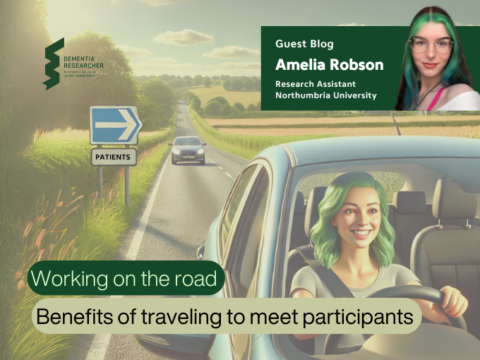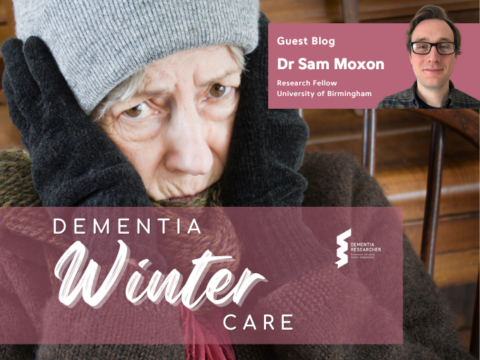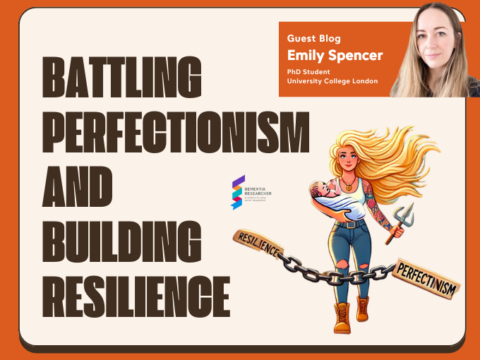The title of this month’s blog may sound like the beginning to ‘September’ by Earth, Wind and Fire but it actually has a lot more to do with the analysis of my interaction data set, which I am now beginning! After a year of reading literature and trying to organize it into a narrative, I am ready for something a bit different! One of the things I will start to look at in my analysis is instances in interactions where people are remembering something together – or attempting to remember something together.
Memory is often something that is considered individual – what you personally can remember, recall, or demonstrate, or at a push, the influence of context on memory. I am not a cognitive psychologist, neurologist, neuroscientist or in any way well-versed in the study of internal mental processes or biology of memory. But I am very interested in how these biological and mental processes are played out and made relevant in social interactions.
 As mentioned in a previous blog, I am using conversation analysis in my research. Conversation analysis or CA is a methodological approach to studying interaction in minute detail. For a quick overview of CA, there is a great video you can watch by Professor Liz Stokoe. One of the focuses of CA is the sequential nature of interaction – how what came before in an interaction influences what can come next. For example: if someone asks a question, this restricts the response from the next person who talks – they should answer the question, and if they do not, they make their talk accountable, i.e., the question asker may say “You didn’t answer my question!”. The sequential nature of interaction is understood by people in the interaction, as well as being available to be studied by analysts. This is particularly relevant when discussing memories in interaction with other people – what is termed ‘collective remembering’ or ‘co-remembering’. In CA and other related approaches such as discursive psychology, remembering is viewed as an essentially social activity. When we recall a memory, we do so in the presence of others, and this may involve recalling a shared memory – something experienced by some, or all the people present in the interaction. But when you are living with dementia, this can become trickier as there may be difficulties in recalling memories.
As mentioned in a previous blog, I am using conversation analysis in my research. Conversation analysis or CA is a methodological approach to studying interaction in minute detail. For a quick overview of CA, there is a great video you can watch by Professor Liz Stokoe. One of the focuses of CA is the sequential nature of interaction – how what came before in an interaction influences what can come next. For example: if someone asks a question, this restricts the response from the next person who talks – they should answer the question, and if they do not, they make their talk accountable, i.e., the question asker may say “You didn’t answer my question!”. The sequential nature of interaction is understood by people in the interaction, as well as being available to be studied by analysts. This is particularly relevant when discussing memories in interaction with other people – what is termed ‘collective remembering’ or ‘co-remembering’. In CA and other related approaches such as discursive psychology, remembering is viewed as an essentially social activity. When we recall a memory, we do so in the presence of others, and this may involve recalling a shared memory – something experienced by some, or all the people present in the interaction. But when you are living with dementia, this can become trickier as there may be difficulties in recalling memories.
For example, in one of the interactions in my data set, a married heterosexual couple are interacting. The husband (let’s call him Simon) has dementia with Lewy bodies (DLB), and the wife (let’s call her Anna) does not. Anna asks a “do you remember…” question, which is met by silence in the space where we would expect a response from Simon – does this make him accountable? Does Anna now say, “you didn’t answer my question!”? No, instead Anna then expands upon her initial question by giving further detail of the memory, there is then further silence and another expansion which is then met by a quiet “hm” from Simon. I am interested in how in this sequence of recalling a shared, collective memory, Anna’s talk does not draw attention to Simon’s minimal and slow response. If Anna did this, it could cause upset and damage to Simon’s identity. And in the context of Simon having DLB, demonstrates an awareness that processing and formulating talk takes longer for him than for someone who does not have DLB. So, Anna does not at any point hold Simon accountable, for not answering her question, showing that possible adaptations are made for when her and Simon interact. This also demonstrates how family and carers can interact in a way which is supportive of the identity of someone living with dementia, and how this may involve breaking conversational norms such as a question being met with an answer.

If you want to know more about different qualitative research methods check our Methods Matter Podcast starting on 25th October
This is just one example from my dataset which features over 45 hours of data. Studying these instances where the topic of ‘remembering’ is brought overtly into an interaction, e.g., by saying “do you remember…” or “remember when…” seems to be something which could be more problematic in people living with dementia – it may be used as a way of reminiscing together of fond memories, but in other research, invoking memories has been found to be used to defend against challenges and objections. It will be interesting to see if memories are used in this way in my data set, or perhaps if they are used in other ways. For example, to test the memory of the person living with dementia. I am wanting to look at how the use of shared memories in conversation can be used as a possible way of reminding the person living with dementia of their identity – for example, as a person who enjoys seeing apple blossom on the trees, and knows about different varieties of apples, as was the case in Simon and Anna’s interaction.
Next month I hope to share with you how the analysis is going and list some tips for beginning a conversation analytic project analysis. Thank you for reading!

Felicity Slocombe
Author
Felicity Slocombe is a first year PhD Student from Loughborough University. Felicity’s research focuses on identity and dementia and how identity can be managed interactionally – how we can help support identity of people living with dementia through our conversations. Driven by a family connection to dementia, and writing each month on a range of topics from her work, and that of her wider group ACTInG (Applied Cognition Technology and Interaction Group), and sharing news from her training and events.

 Print This Post
Print This Post





